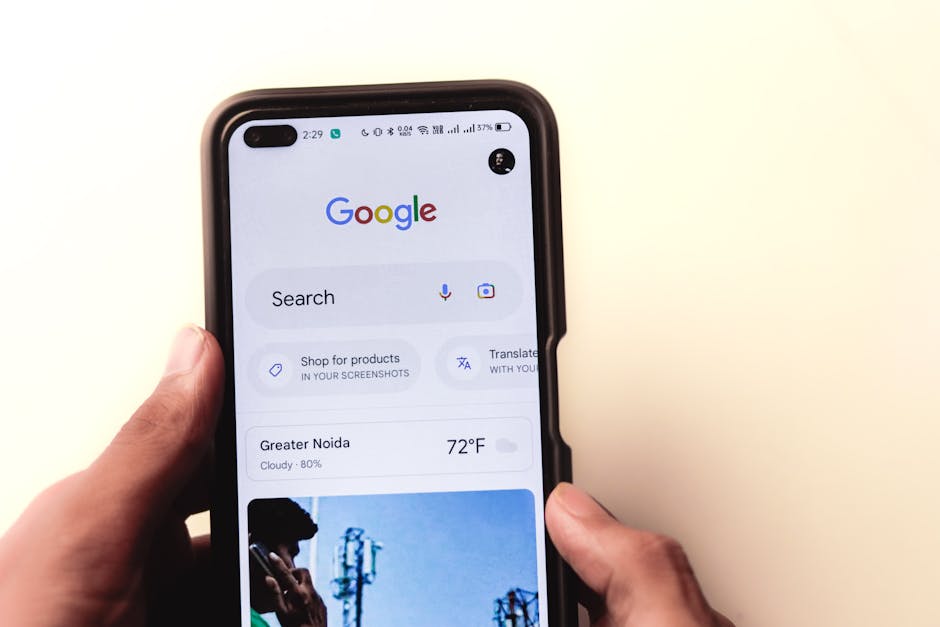How to Optimize Your Website for Mobile Search
Optimizing your website for mobile search is essential in today's digital landscape. With more people using smartphones and tablets to browse the internet, ensuring your site is mobile-friendly can significantly impact its visibility and user experience. This article will explore the key aspects of optimizing your website for mobile search, covering everything from responsive design to performance enhancements.
Responsive Design
A responsive design ensures that your website adapts seamlessly to various screen sizes and orientations. This involves using flexible grids, layouts, and images that automatically adjust based on the device being used. Google's mobile-first indexing prioritizes websites that provide a good mobile experience, making responsive design crucial for SEO.
Start by using a fluid grid layout, where elements are sized in relative units like percentages rather than absolute units like pixels. This allows content to scale up or down depending on the screen size. Ensure images are flexible as well, using CSS techniques to make them responsive.
Media queries in CSS can help create breakpoints for different screen sizes. These breakpoints allow you to apply different styles for various devices, ensuring a consistent look and feel across all platforms. For example:
@media only screen and (max-width: 600px) {
.class {
property: value;
}
}
Improving Page Speed
Page speed is a critical factor for both user experience and SEO rankings. Slow-loading pages can lead to higher bounce rates and lower search engine rankings. To optimize your website's speed, start by compressing images using tools like TinyPNG or ImageOptim.
Minimize the use of JavaScript and CSS files by combining them into single files wherever possible. Tools like Gulp or Webpack can automate this process, making it easier to manage code optimizations.
Consider using a content delivery network (CDN) to distribute your site's content across multiple servers worldwide. This reduces the load time by serving data from servers closer to the user's location.
User Experience (UX)
A positive user experience is vital for retaining visitors and improving mobile search rankings. Ensure that your site's navigation is intuitive and easy to use on smaller screens. Utilize larger touch targets for buttons and links to accommodate finger taps rather than mouse clicks.

Simplify forms by reducing the number of fields and using auto-fill options where applicable. This minimizes the amount of typing required on a mobile device, enhancing usability.
Incorporate accessible design principles such as sufficient color contrast and readable font sizes. Tools like WAVE or Lighthouse can help audit your site's accessibility and provide recommendations for improvement.
Local SEO Optimization
Mobile searches often have local intent, with users looking for nearby businesses or services. Optimizing your site for local SEO involves several strategies:
- Google My Business: Ensure your business is listed on Google My Business with accurate information such as address, phone number, and operating hours.
- Local Keywords: Incorporate location-specific keywords into your content, meta descriptions, and title tags.
- Citations: Ensure consistency in your business information across all online directories and review sites.
| Strategy | Description |
|---|---|
| Google My Business | List your business with accurate details for better visibility in local searches. |
| Local Keywords | Include location-specific keywords throughout your website content. |
| Citations | Maintain consistent business information across online directories. |
Encourage customers to leave reviews on Google and other review sites, as positive reviews can boost your local search rankings. Responding to reviews also shows that you value customer feedback and engagement.
The key points discussed emphasize the importance of responsive design, page speed optimization, user experience enhancements, and local SEO strategies for optimizing a website for mobile search. Implementing these practices ensures that your website remains competitive in an increasingly mobile-centric world.
A responsive design allows your site to adapt to various devices seamlessly while improving page speed through image compression and minimizing JavaScript/CSS enhances user satisfaction. A positive user experience with intuitive navigation and accessible design retains visitors, while local SEO optimization makes your business easily discoverable in local searches. By focusing on these aspects, you can significantly improve your site's performance and visibility on mobile devices.